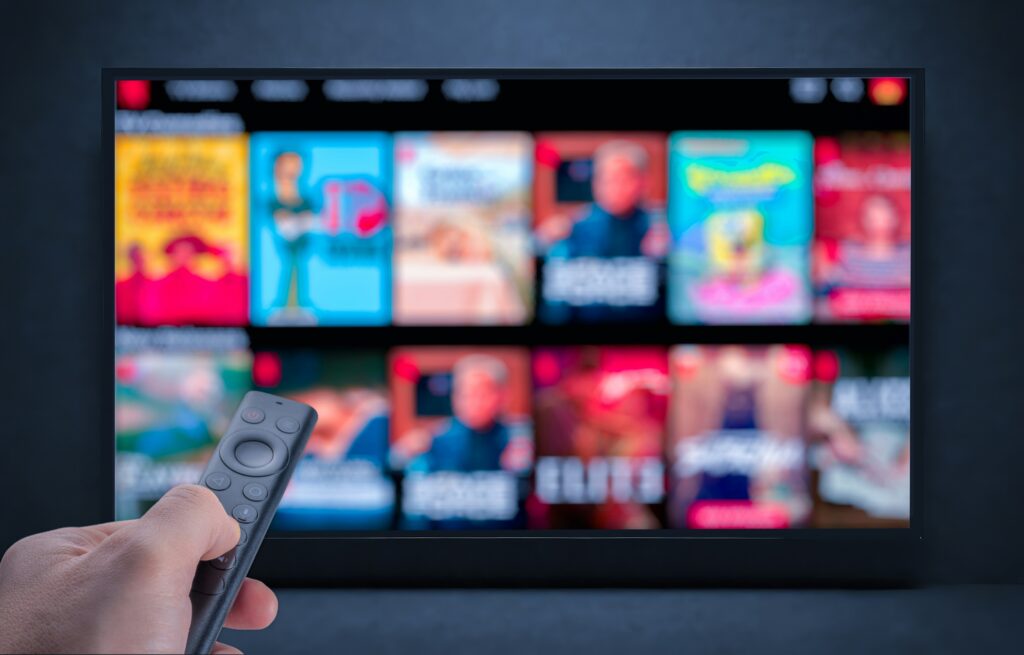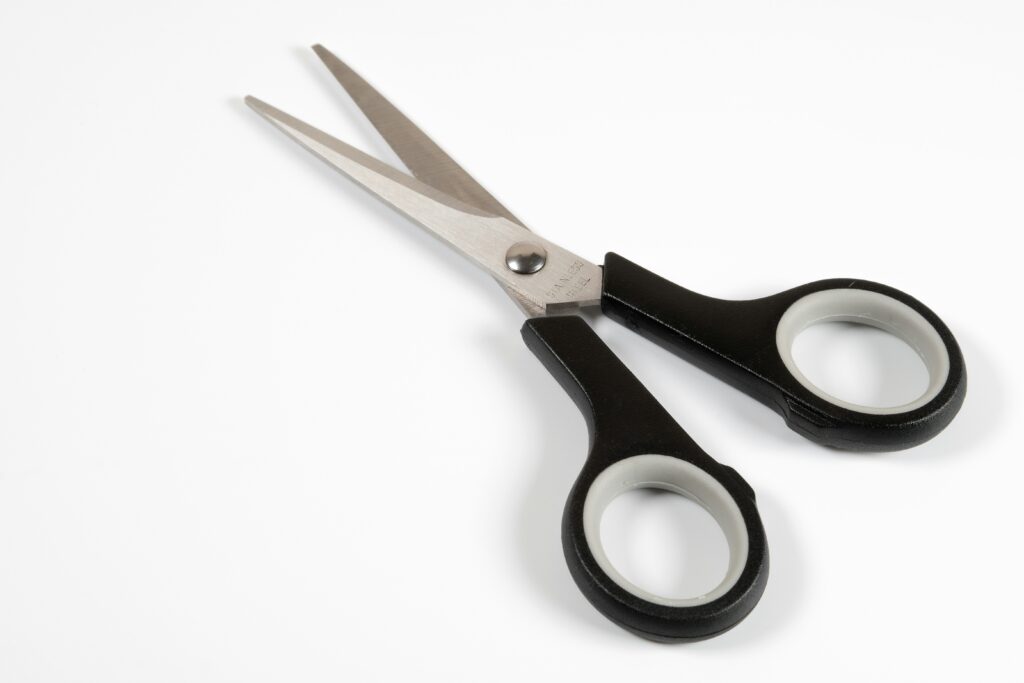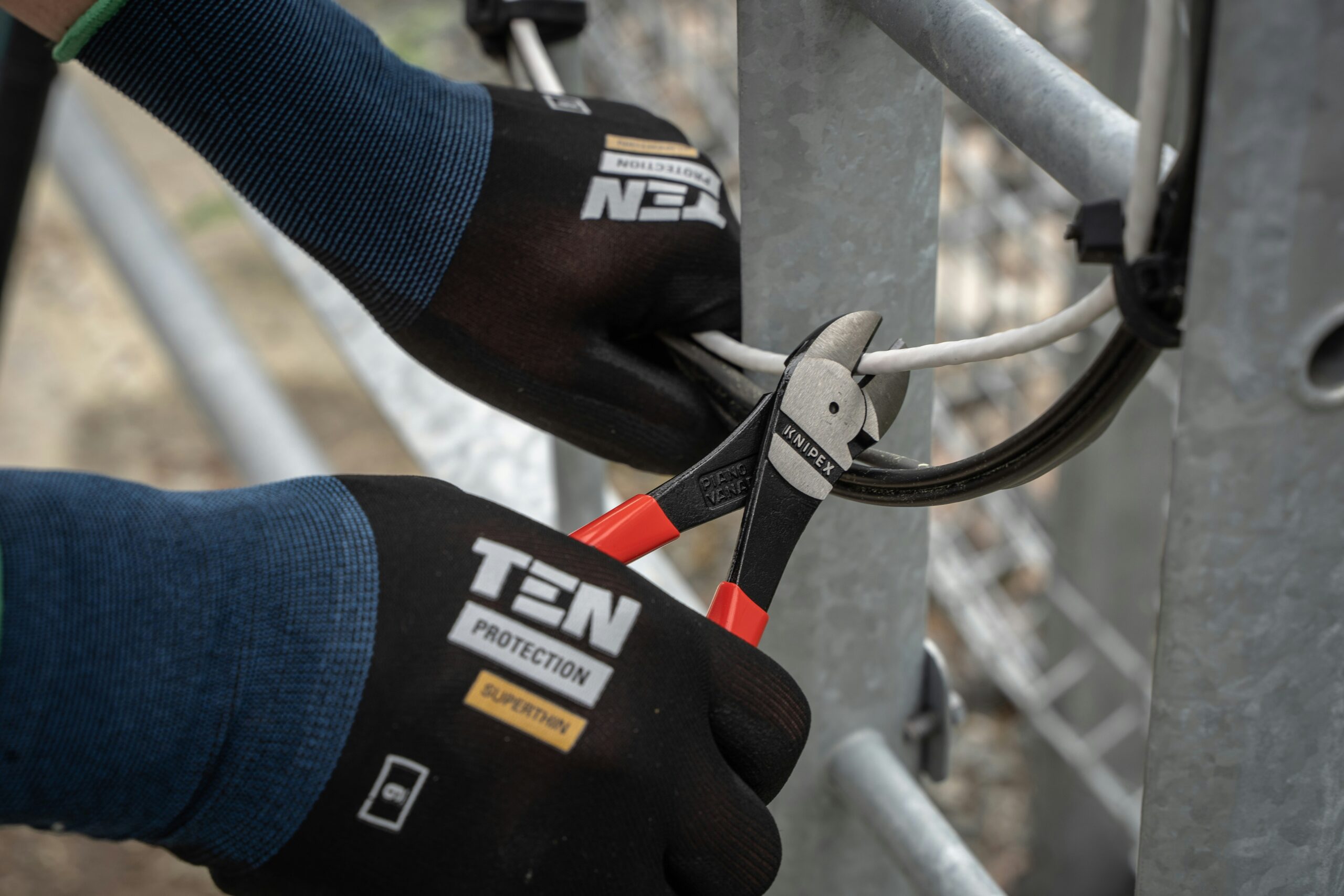Cutting the cord has become a full-blown trend in 2025. Traditional cable TV subscriptions are plummeting as viewers turn to Cable TV alternatives like IPTV and streaming services. In fact, by 2025 an estimated 77 million U.S. households will have dropped pay-TV, outnumbering the ~57 million homes still paying for cable. This seismic shift is largely due to the IPTV vs Cable showdown – and IPTV (Internet Protocol Television) is coming out on top for many consumers. In this article, we’ll explore how IPTV compares to cable TV in terms of price, content, compatibility, and user experience, explaining IPTV advantages and why so many people are choosing to cut the cord.
What is IPTV, and How Does It Differ from Cable TV?
IPTV (Internet Protocol Television) delivers TV content through internet networks instead of traditional cable lines or satellite signals. In practical terms, IPTV services stream live TV channels and on-demand videos over your broadband connection, usually via apps or devices you already own. Cable TV, on the other hand, relies on coaxial/fiber cables and a set-top box, delivering a fixed bundle of channels to your television. The difference in delivery method leads to some key distinctions:
- Content Delivery: Cable broadcasts channels in a pre-set package over a physical cable line. IPTV streams content digitally over the internet, often allowing more dynamic selection of channels and on-demand programs.
- Flexibility: IPTV’s internet-based system means you can watch on various devices (smart TVs, smartphones, tablets, etc.) using an app, not just a TV with a cable hookup. Cable TV is mostly tethered to the TV set and cable box, with limited mobile viewing options.
- Customization: IPTV providers often let you customize your content or subscribe to specific packages (or even a la carte channels), whereas cable comes in rigid tiered bundles. IPTV also integrates interactive features (pausing live TV, on-demand libraries) that cable’s traditional system can’t easily match.
- Reliability: Cable signals are typically stable and not dependent on internet speed, so they’re less prone to buffering. IPTV quality depends on your internet connection – a stable broadband (usually 25 Mbps or higher for 4K streams) is recommended for smooth viewing. Fortunately, most homes in 2025 have access to sufficient internet speeds, and the trade-off in flexibility and features often outweighs the occasional hiccup for IPTV users.
In short, cable offers a plug-and-play simplicity and historically reliable signal, but IPTV aligns better with the modern expectation of watching what you want, when and where you want. Next, let’s dig into why countless consumers are favoring IPTV over cable this year.
Why People Are Cutting the Cord in 2025
If it feels like everyone is cancelling their cable lately, it’s because they are – in droves. Between 2019 and 2025, millions canceled pay-TV, and surveys show the primary motivator is cost. Traditional cable bills have skyrocketed, while affordable internet TV options expanded. Consider these telling statistics:
- High Costs: A whopping 86.7% of people cut the cord because cable TV was too expensive. And no wonder – the average U.S. cable bill hit roughly $147 per month in 2024 (over $1,700 a year) amid constant rate hikes. Those fees keep rising, with equipment rentals, HD fees, and broadcast surcharges piling on. Many households realized they were paying a premium for dozens of channels they never even watch.
- Streaming Value: By contrast, streaming and IPTV services often cost a fraction of cable. One analysis found you can save up to $70 a month by cutting cable TV in favor of internet-based options. It’s common to replace a $100+ cable package with a combo of IPTV and on-demand streaming that totals much less. For price-sensitive viewers, the math is a no-brainer.
- Content Availability: Another survey revealed 71% of people who dropped cable say they can find all the content they want online – whether through IPTV services, Netflix/Hulu, or other streaming platforms. Essentially, cable no longer has a monopoly on “premium” content or live sports. Almost anything you want to watch is available via the internet, often on-demand. In the same survey, 69% also cited cost as a major factor for quitting cable, reinforcing that it’s the combination of high prices and ample online content that’s driving cord-cutting.
- Changing Habits: We’re seeing a generational shift in TV habits. Virtually all younger adults (ages 18–34) primarily use internet services for TV rather than cable. But it’s not just the young – by 2023, over 60% of all U.S. households with a TV had no traditional TV subscription at all. People have grown accustomed to watching on phones, bingeing series on-demand, and not being tied to a cable company’s schedule or rental hardware.
Consumers are clearly hungry for more flexible and affordable entertainment, and IPTV has emerged as a leading Cable TV alternative to meet those needs. Below, we compare IPTV vs cable on the key points of price, content, device compatibility, and user experience – the areas that matter most to someone deciding “should I switch from cable to IPTV?”.

Price Comparison: IPTV vs Cable TV
There’s no contest here: IPTV is generally far cheaper than cable. Traditional cable TV packages often bundle in many channels (and add-ons you might not want) for a hefty monthly fee. As noted, U.S. cable bills average around $100–$150 per month in 2025 once taxes and fees are included. That means cable users might spend over $1,200–$1,500 per year just on TV service. And if you want DVR service or premium channels, cable companies typically charge extra.
By contrast, IPTV providers offer low-cost streaming subscriptions with massive channel lineups. It’s common to find reputable IPTV services in the range of $10–$30 per month for hundreds or even thousands of channels. For example, many highly rated IPTV providers charge around $15/month (or less with longer plans) for an all-inclusive package. There are no cable box rentals or regional sports fees on your bill – just the flat subscription rate. The savings add up quickly: by switching from cable to IPTV, families can save hundreds of dollars a year. (One case study in Los Angeles saw a viewer go from an $89/month cable bill to a $19/month IPTV plan – saving over $800 annually without losing his favorite channels)
Importantly, IPTV requires no long-term contracts in most cases. You’re free to cancel or switch providers anytime if you’re not satisfied, unlike cable companies that often lock you into 12–24 month contracts with steep cancellation penalties. This month-to-month freedom means you only pay for TV when you want it. During off-seasons or if money gets tight, you could pause service without hassle – something unheard of with traditional cable.
It’s also worth noting that competition among IPTV services keeps prices competitive. While cable companies in many regions function almost like monopolies (leading to those annual price hikes), IPTV providers operate online globally, giving consumers many choices. Overall, it’s not uncommon for IPTV to cost 50–75% less than an equivalent cable package while still delivering comparable (or greater) content. If saving money is a priority, IPTV is the clear winner.
Content Variety and Flexibility
When it comes to content selection, IPTV opens up a world of entertainment that cable can’t match. A typical cable package might include a few hundred channels – mostly domestic networks, with maybe a handful of international or specialty channels if you pay for extra tiers. IPTV, on the other hand, often offers thousands of channels from all over the globe, plus gigantic on-demand libraries of shows and movies.
For instance, some popular IPTV services boast 10,000+ live TV channels spanning sports, news, movies, kids, and international programming. You’ll find channels from the UK, Canada, Europe, Asia, the Middle East, and more – content that is nearly impossible to get on a local cable plan. Expats and multicultural families love this, as IPTV isn’t limited by geographic broadcast regions. In addition, IPTV subscriptions typically include extensive Video on Demand (VOD) catalogs. It’s not unusual to have tens of thousands of movies and TV series on-demand with an IPTV service, essentially combining live TV with a Netflix-like library in one package. (For example, Flash 4K IPTV – one of the top IPTV providers we reviewed – offers over 18,000 live channels and 135,000+ VOD titles in its lineup, covering virtually every genre and language imaginable.)
Cable TV does offer some on-demand content, but it’s usually limited to the networks in your package and often requires navigating a clunky on-demand menu or paying per movie rental. IPTV’s on-demand selection is typically much larger and included in your plan at no extra cost. Want to binge last night’s episodes or watch a movie on your schedule? IPTV makes it easy, whereas cable might have you DVR it (for an extra fee) or hope it comes on again.
Another advantage in content flexibility is personalization. Cable bundles are one-size-fits-all, meaning you’re stuck paying for channels you don’t watch. With IPTV, because the cost is so low for a huge bundle, you effectively get all the content without worrying about each channel’s price. And some IPTV platforms or streaming services let you pick and choose add-on channel packs or premium networks a la carte. It’s a far more consumer-friendly approach to content. As viewing tastes change, you can adapt your subscriptions easily – something cable has never excelled at.
Finally, sports fans and movie buffs will appreciate that IPTV often carries premium sports packages, Pay-Per-View events, and the latest film releases across various international channels. In many cases, an IPTV subscription will include sports league passes or premium movie channels that would cost a fortune on cable. The breadth of content is simply greater with IPTV.
Device Compatibility and Convenience
One of the strongest advantages of IPTV is the freedom to watch on any device, not just a TV tethered to a cable box. With cable, you typically need a dedicated set-top box for each TV (often at additional rental cost per box), and watching on mobile devices requires using your cable provider’s app (if they even offer full channel streaming on mobile, which can be limited). IPTV breaks those hardware chains completely.
IPTV services can be used on Smart TVs, streaming devices (Amazon Firestick, Roku, Apple TV boxes), smartphones, tablets, laptops, or any device that can run an IPTV app or player. You’re not limited to the living room TV; you could start a show on your tablet, then continue on the bedroom Smart TV, and even watch live news on your phone during a commute. This multi-device flexibility is a game-changer for modern viewers with on-the-go lifestyles or families that want to watch different shows simultaneously on different screens.
Setting up IPTV on devices is typically straightforward. You usually get an app or use a media player (there are many options – see our guide on the best IPTV apps for various platforms) and enter your subscription credentials or playlist URL. There’s no need for a technician to install cables or drill walls. As long as you have internet access, you can plug in a streaming stick or open an app and start watching within minutes. This also means no bulky cable box clutter or extra wires – a simple app interface is all you deal with.
Another perk is that IPTV travels with you. If you’re on vacation or moving houses, you can take your streaming service along – something cable can’t do because it’s tied to a physical address/network. Many cord-cutters enjoy that they can use their IPTV service even while abroad (for example, to catch their home country’s channels). In cases where an IPTV provider has regional restrictions or if you want to ensure privacy, using a VPN for IPTV is a smart solution. A VPN (Virtual Private Network) can bypass any geo-blocks and prevent your ISP from throttling your streaming. Check out our guide on VPN for IPTV to learn how a VPN can secure your connection and keep your streams running smoothly (especially useful if your internet provider tends to slow down streaming traffic).
Modern IPTV services feature user-friendly on-screen guides and menus. You can browse live channels, on-demand movies, sports, and more on any device with an app – a level of convenience cable boxes can’t match.
In contrast, cable TV’s device compatibility is quite limited. You might get to use a mobile app like Xfinity or Spectrum’s app, but these often restrict streaming to on-demand content or require you to be on your home WiFi network for “live” channel streaming due to content licensing. Plus, each additional TV with cable needs its own box (and sometimes an “activation” fee or rental). IPTV typically allows multiple connections on one account (e.g., watch on two devices at once), and even if an IPTV provider limits to one device at a time, you can usually install the app on all your devices and just log in as needed. It’s an ecosystem built for how people consume media today – seamlessly across screens.

User Experience: Features and Quality
Beyond cost and content, the user experience with IPTV tends to be more modern and feature-rich than traditional cable. Here are some ways IPTV elevates the viewing experience:
- Interactive Features: IPTV often includes digital video recorder (DVR) functionality or catch-up TV features built-in to the service. Many IPTV providers offer cloud DVR at no extra charge, letting you pause, rewind, or record live TV – without needing a physical DVR box. Cable can do DVR too, but it usually costs more per month and has storage limits. With IPTV, pausing a live soccer match or replaying a news segment is usually just a tap away. Some services even have instant replay or start-over features for live programs, which cable lacks unless you remembered to record the show.
- On-Demand and Binge-Watching: As mentioned, the presence of vast on-demand libraries means your viewing is not tied to schedules. The IPTV interface might present a Netflix-like gallery of series and films alongside live channels. Want to binge a whole season over the weekend? No need for a separate streaming subscription in many cases – IPTV’s hybrid live/VOD setup has you covered. Cable’s on-demand catalogs are improving but remain far more limited, and new releases might require pay-per-view fees. Today’s viewers expect a binge-friendly, on-demand experience, and IPTV delivers that in spades.
- Picture Quality: While cable often maxes out at 1080p HD (and only offers 4K for a very limited selection of events or on-demand titles), IPTV services commonly support Full HD and even 4K Ultra HD streams for many channels and movies. If you have a 4K TV and a fast internet connection, IPTV lets you take full advantage of that setup. Live sports and nature documentaries in 4K look stunning, and you’re not stuck waiting for your cable provider to add more 4K channels (which, historically, has been slow). Keep in mind that streaming 4K does require more bandwidth (hence the earlier note about a robust internet), but the option is there and growing.
- User Interface and Navigation: Anyone who’s struggled with an outdated cable box menu can appreciate this – IPTV apps and devices often have slick, intuitive UIs. You’ll typically see program guides (EPGs) that resemble cable guides but with faster search and filtering, cover art for on-demand titles, and personalized recommendations on some platforms. It’s easier to discover content because IPTV interfaces can integrate modern search (even voice search) and show you what’s trending. In short, IPTV feels like using a modern app, whereas cable boxes often feel stuck in the 2000s.
- Personalization: Some IPTV services allow profiles or watchlists, and because they’re internet-based, they can sometimes integrate with other services (for example, using one device for multiple streaming sources). Cable is a closed system – you get what they give. With IPTV and streaming, you can tailor your viewing experience more granularly. Even simple touches like being able to switch audio languages or turn on subtitles across many international channels are things IPTV handles better than cable.
To be fair, cable’s big remaining advantage in user experience is that it’s simple for those uncomfortable with tech – you change channels with a remote and don’t worry about internet issues. Additionally, traditional live TV on cable has no streaming latency, so channel surfing is a bit faster (no buffering). But as internet speeds and Wi-Fi technology have improved, IPTV channel switching has become quite quick, and the added features easily compensate. Most users find that once they get used to the on-demand world of IPTV, going back to cable’s linear, inflexible format feels like a step backward.
Should You Switch from Cable to IPTV?
By now it’s clear that IPTV offers significant benefits over cable for most people. If you’re still on the fence asking, “Should I switch from cable to IPTV?”, consider your priorities:
- Budget: Do you want to save money on TV? If yes, IPTV is an easy choice – many households cut their TV bill by over half when switching to IPTV. Those savings could go toward faster internet, other streaming subscriptions, or just back in your pocket.
- Content: Are you missing out on certain channels or international content with cable? IPTV will vastly expand your options, giving you access to channels and shows far beyond what cable provides. You won’t be stuck paying for channels you never watch.
- Flexibility: Do you value watching on multiple devices or being able to start/stop service at will? IPTV’s device compatibility and lack of contracts fit a flexible lifestyle. No more calling the cable company to negotiate or return equipment – IPTV puts you in control.
- Experience: Do you prefer on-demand viewing and modern features? If you love binge-watching and customizing your entertainment, IPTV’s user experience is built for you, whereas cable is rooted in the old channel-surfing paradigm.
For most viewers in 2025, the answer to the switch question is “Yes!”. Unless you live in an area with very poor internet or you truly only watch a handful of local channels (which you could often get free over-the-air with an antenna), there’s little reason to stick with cable’s high costs and limits. Even local news and sports are available via streaming/IPTV solutions now, so the reasons to stay with cable are dwindling.

Ready to Cut the Cord? Try IPTV Risk-Free
If you’re ready to join the cord-cutting revolution, an excellent way to start is by test-driving a quality IPTV service. We recommend Flash 4K IPTV – a top-rated IPTV provider known for its huge channel selection, 4K streaming quality, and reliable performance. Flash 4K IPTV offers a 36-hour free trial with no commitment, so you can experience the difference firsthand. Over a day and a half, you’ll be able to explore thousands of live channels and on-demand titles, watch on all your devices, and see how it compares to your current cable setup. With affordable plans (starting around $11.99/month) and a no-contract policy, it’s a hassle-free way to see if cutting the cord is right for you.


